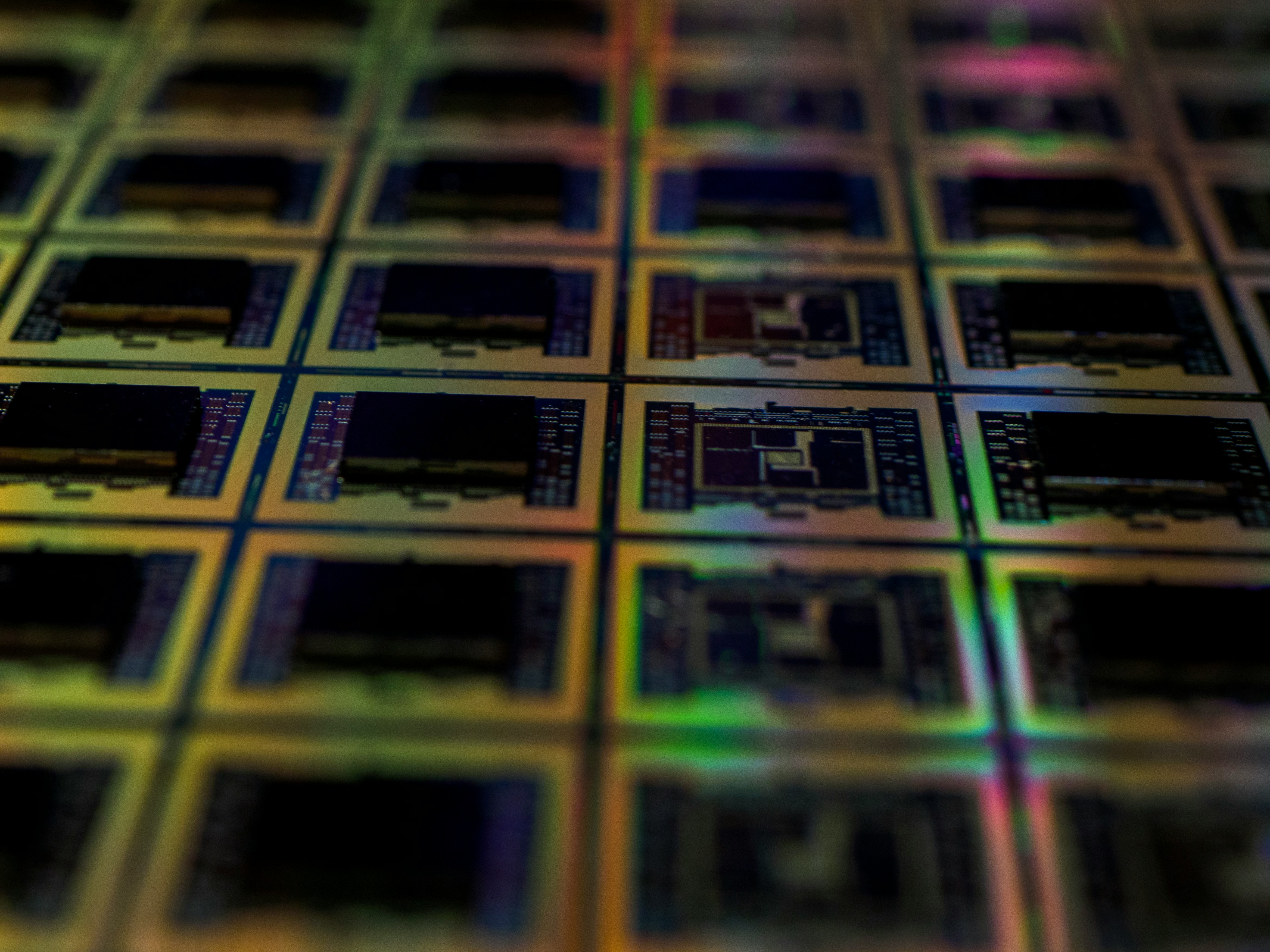
Semiconductor Team Structures Explained: Who Does What in a Modern Semiconductor Department
The semiconductor industry underpins nearly all modern electronics—from smartphones and servers to sensors, automotive control systems, artificial intelligence accelerators, and more. In the UK it plays a growing role in chip design, MEMS, optoelectronics, and foundry services. Building performant, reliable, competitive semiconductor products requires tightly coordinated teams that span design, fabrication, testing, packaging, yield engineering, reliability, verification, quality, and supply chain.
If you’re applying for semiconductor roles via SemiconductorJobs.co.uk or building a semiconductor team, this guide will help you understand the typical roles, how they collaborate across the product lifecycle, what skills UK employers expect, salary expectations, common challenges, and how to structure teams to succeed.
Why Team Structure Matters in Semiconductor Development
Semiconductor development is exceptionally complex. Mistakes early in design or fabrication cost heavily later. Without clear responsibilities:
Design and layout issues lead to silicon failures.
Yield issues in fabrication or packaging degrade profitability.
Test coverage gaps let faulty chips through.
Reliability problems manifest in field failures.
Supply chain or packaging miscoordination causes delays.
A well-structured semiconductor department ensures accountability, quality, efficiency, and cost control from design through to delivery.
Core Roles in a Semiconductor Department
Below are the principal roles you’ll typically find in a mature semiconductor organisation. Depending on the size and stage, some roles may be combined or split further.
1) Chip / IC Design Engineer
These are the engineers who design the integrated circuits—logic, analog, digital, mixed signal, RF etc.
What they do:
Define functional specifications.
Write RTL (Register-Transfer Level) code.
Perform architectural trade-offs (speed vs power vs area).
Collaborate with verification and physical design for timing, power, and layout constraints.
Work with CAD tools to synthesise, place, route, and generate netlists.
Skills: Proficiency in hardware description languages (Verilog, VHDL, SystemVerilog), strong understanding of digital logic, timing analysis, power optimisation, familiarity with tools like Synopsys, Cadence; analog design knowledge if mixed signal; scripting (TCL, Python); awareness of process design kits (PDKs).
2) Physical Design Engineer / Layout Engineer
These engineers take the RTL or netlist and translate that into silicon layout, considering physical constraints.
What they do:
Floorplanning, placement, routing.
Optimising for area, parasitic capacitance, power, leakage.
Ensuring design meets timing, signal integrity, cross-talk, electromigration constraints.
Working with foundry PDKs and DRC / LVS / layout verification tools.
Skills: Strong CAD tool skills, understanding of semiconductor processes, experience with timing closure, power integrity, parasitic extraction, knowledge of DRC/LVS, familiarity with process nodes (e.g. 7nm, 14nm, 28nm etc.), scripting and automation.
3) Analog / RF Design Engineer
Analog and RF designers deal with continuous signals, high-frequency circuits, sensitive components and signal integrity.
What they do:
Design amplifiers, filters, mixers, ADCs/DACs, RF front ends.
Consider noise, linearity, distortion, matching, layout parasitics.
Characterise circuits across temperature, process, voltage variation.
Collaborate with physical design on layout and matching, with test engineers for characterization.
Skills: Solid understanding of analog circuit theory, RF design, low noise design, analog layout, measurement equipment, signal-integrity challenges, PDKs for analog components.
4) Verification Engineer
Verification is the guard against design flaws before silicon is fabricated.
What they do:
Develop testbenches, simulation environments.
Write constraints, assertions (SVA/UVM etc.).
Perform functional verification, coverage analysis.
Sometimes formal verification or equivalence checking.
Work with physical design engineers to ensure timing, power, etc.
Skills: Strong in simulation, assertions, coverage metrics, verification methodologies like UVM, knowledge of verification tools (Cadence, Mentor, Synopsys), scripting, debugging failing testcases.
5) Process / Fabrication Engineer
Fabrication (fab) engineers manage the silicon foundry processes—lithography, etch, deposition, CMP, doping, photomasks etc.
What they do:
Manage process steps, monitor yield, reduce defects.
Optimise process parameters.
Ensure process repeatability, uniformity.
Interface with mask / lithography vendors, maintain cleanroom protocols.
Skills: Semiconductor process knowledge, cleanroom operations, defect control, metrology, yield analysis, process equipment understanding, quality control, statistical process control.
6) Test Engineer / Test Development
Once silicon returns, test engineers verify actual behaviour; develop test programs for wafer sort, final test, burn-in, etc.
What they do:
Design test vectors, test suites.
Collaborate with design verification to cover known corner cases.
Fault coverage analysis.
Automate test flows.
Analyse test data, sort bins, yield metrics.
Skills: Knowledge of automatic test equipment (ATE), test program languages, failure analysis, statistics, scripting, understanding of wafer sort and package test, temperature/voltage variation.
7) Yield Engineer / Yield Enhancement Specialist
Keeps an eye on how many good chips per wafer, what defects or process or layout issues reduce yield, and works to recover yield loss.
What they do:
Analyse test and fab data to find defect hotspots.
Correlate layout or process variations with yield.
Work on process fixes, mask corrections, layout redesign.
Collaborate with test, process, design teams to feedback improvements.
Skills:Statistical analysis, defect mapping, metrology, knowledge of process variability, cooperation across design and fab, use of tools to visualise yield maps, possibly machine learning for trend detection.
8) Reliability Engineer
Ensures long-term performance, under stress, temperature, voltage, environmental conditions.
What they do:
Plan accelerated ageing, stress tests, thermal cycling, humidity, EM/EMI, power supply variation.
Track failure rates, model lifetime, define margins.
Work with design and process on robustness, guard bands.
Skills:Materials science, circuit ageing mechanisms, accelerated test methodologies, statistical extrapolation, understanding of degradation mechanisms (TDDB, NBTI, HCI etc.).
9) Packaging Engineer / Assembly
After wafer fabrication and test, packaging is required before chips are used in final products.
What they do:
Design package type: BGA, QFN, flip-chip, through-silicon vias etc.
Thermal, mechanical stress, signal integrity across package interface.
Lead or outsource assembly, soldering, inspection.
Seal for protection, handle moisture, wire bonding, etc.
Skills: Package design, materials knowledge, thermal / mechanical stress understanding, soldering/assembly methods, co-ordination with test and reliability.
10) CAD / EDA Tool Specialist
Electronic Design Automation (EDA) tools are central to design, verification and layout.
What they do:
Maintain and configure tool flows (synthesis, place-&-route, simulation tools etc.).
Develop or customise scripts or plugins to automate or improve flows.
Manage tool licensing, version upgrades and calibrate tools per PDK.
Skills: Familiarity with EDA tool chains, scripting, verification of tool outputs, debugging tool toolchain issues.
11) Hardware / Electrical Systems Engineer
Focuses on the chip’s interaction with external systems: boards, PCB design, power delivery, signal integrity, clocking, packaging interface.
What they do:
Design PCBs around the chip, power regulators, clock networks.
Ensure signal integrity, power supply stability, thermal dissipation.
Work with packaging, mechanical design for thermal and mechanical constraints.
Skills: PCB layout, high-speed digital design, power integrity, EMC/EMI, thermal modelling, mechanical packaging.
12) Firmware Engineer
Embedded or on-chip firmware may be needed for system management, power management, sensors, or boot sequences.
What they do:
Write firmware for management controllers, power sequencing, boot loaders.
Work with software and hardware teams for interfaces.
Ensure firmware is robust, updates are controlled, security is considered.
Skills: Embedded C/C++, low-level programming, memory constraints, bootloader or firmware protocols, interfacing, version control.
13) Quality Assurance / Quality Control (QA/QC)
Oversees standards, audits, defect control, and product quality over the manufacturing process and in final packaged product.
What they do:
Define quality metrics and acceptance criteria.
Perform audits of process steps.
Inspect incoming materials (wafers, masks, packaging).
Monitor shipments, failure return rates.
Skills: Quality standards, measurement instruments, defect rate tracking, root-cause analysis, documentation and procedures.
14) Supply Chain & Materials Procurement Specialist
Semiconductor supply chains are extremely intricate; availability and quality of raw materials, masks, substrates have strong effect on timelines and yield.
What they do:
Maintain relationships with vendors of silicon wafers, packaging materials, photomask houses etc.
Forecast demand, mitigate risk due to shortages or defects.
Ensure material quality and consistency.
Coordinate lead times for masks, substrates, tools.
Skills: Negotiation, quality systems, materials compatibility, risk management, understanding of lead times and process batches.
15) Product / Qualification Engineer
Owns the qualification of the product for market release or customer integration; ensures that chips meet all required metrics, thermal, reliability, regulatory/environmental depending on end-use (e.g. automotive, industrial etc.).
What they do:
Define qualification tests (temperature, humidity, thermal cycling, etc.).
Ensure consistency across lots and packages.
Work with customers or product leads for integration tests.
Skills: Test design, reliability tests, product specifications, customer communication, environmental and regulatory standards.
16) Project / Programme Manager
Oversees cross-disciplinary tasks, keeps schedule, drives milestones, resource allocation, and manages risk.
What they do:
Create and maintain project plans through design, layout, fab, test, packaging.
Identify dependencies and bottlenecks.
Ensure alignment with business goals and cost targets.
Report status, escalations, revisions, trade-offs.
Skills: Technical understanding of semiconductor flows, communication, scheduling, risk registers, budgeting, stakeholder management.
How These Roles Collaborate Through the Semiconductor Lifecycle
Here’s how teams typically operate across the stages of developing a semiconductor product.
Specification & Architecture - Product management, design engineers, hardware systems, and application stakeholders define performance, power, area, cost, environmental and reliability targets. Supply chain considers availability and materials. EDA / CAD support is scoped.
Design & Verification - Design engineer writes RTL; verification engineer builds testbenches and simulates for functional correctness; analog/RF engineers design their blocks; hardware systems engineer ensures that interfaces align. CAD specialists validate PDK usage.
Physical Design & Layout - Physical design engineers floorplan, place & route; verification ensures layout rules, timing, signal integrity; analog/RF integrates; supply chain validates mask and PDK readiness; process engineers monitor yield risk.
Fabrication / Process - Wafer fabrication, process engineers run each step; process control and metrology measure defect densities, uniformity; yield engineers monitor yield losses and feedback.
Test & Packaging - Test engineers run wafer sort and final test; packaging engineers manage assembly; QA ensures package reliability; qualification engineers test under stress and environmental factors.
Reliability & Qualification - Reliability engineers run lifetime and ageing tests; product qualification ensures that chips meet specifications under customer conditions; environmental tests (temperature, moisture, vibration) executed.
Production / Volume & Delivery - QA/QC ensures consistency; supply chain ensures material sourcing; product engineers manage customer assessments; packaging and yield reach volume targets; project managers track cost, schedule, and delivery.
Support & Field Reliability - Post-market failure analysis (if devices used in systems), reliability monitoring, returns or failure data feeding back to yield and design engineers; firmware updates or product revisions as needed; supply chain adapts for future waves.
Key Skills, Qualifications & Experience in UK Semiconductor Roles
UK employers look for:
Degrees in Electrical / Electronic Engineering, Physics, Materials Science, Computer Engineering, or related fields. Advanced degrees useful especially for analog, RF, or process physics roles.
Strong proficiency with EDA / CAD tools, RTL coding, verification methodologies, and scripting.
Experience with fabrication processes, metrology, layout constraints, power/heat management.
Skills in test engineering, yield analysis, packaging, reliability.
Understanding of standards or end-use constraints (automotive, industrial, consumer etc.).
Soft skills: problem-solving under constraints, cross-team communication, debugging, attention to detail, project discipline.
For senior roles, experience delivering product silicon, ramping yield, coordinating external suppliers, leading teams.
Salary Ranges & Career Path in the UK
Though semiconductors compensation depends heavily on role complexity, company, and location, here are indicative ranges:
Entry / Junior Design / Test Engineer: ~ £40,000 to £60,000.
Mid-Level Engineers (design, physical, analog, test, yield): ~ £60,000 to £90,000.
Senior Engineers and Specialists (analog, RF, process, reliability): ~ £90,000 to £120,000+.
Lead Roles or Technical Fellows: can reach £120,000 to £150,000+, especially in high tech / corporate or research hub settings.
Project / Programme Manager roles with large scope: ~ £80,000 to £120,000+.
Career progression often goes from junior to mid-level, then to senior specialist, lead or principal engineer; alternatively into management tracks, project leads or into adjacent roles (e.g. product, operations, or strategic roles). Experience fabricating chips, delivering yields, being part of tapeouts or process improvements is particularly valuable.
Trends & Challenges in UK Semiconductor Sector
Trends:
UK government investment in semiconductor fabs, encouraging localisation of manufacture.
Growth of chip design, especially low-power, AI accelerator, sensor and MEMS chips.
Increasing demand for energy efficiency, heat management, and power performance trade-offs.
Higher stakes on reliability and safety, particularly for automotive, aerospace and IoT devices.
Advances in packaging: 3D packaging, chiplets, advanced substrates.
Increased use of simulation, modelling, machine learning for yield prediction or defect detection.
Emphasis on environmental impact, sustainability, materials sourcing, and lifecycle of chips.
Challenges:
High cost of mask sets, fabrication, packaging, which raises barrier to entry.
Tight tolerances and process variation; as nodes shrink, sensitivity to defects increases.
Supply chain issues: shortages of substrates, packaging components, lead times.
Talent shortage in highly specialised roles (analog/RF, process engineering, layout, yield).
Environmental and regulatory compliance regarding materials, chemicals, waste.
Time-to-market pressures; mistakes early in design or verification cascade.
Scaling yield while keeping manufacturing costs low.
Best Practices for Effective Semiconductor Team Structures
Define ownership clearly: design, verification, test, yield, reliability, packaging, process, supply chain. Explicit interfaces and responsibilities reduce handovers and defects.
Invest early in verification and design for test (DFT) techniques; build full verification flows early to catch bugs before fabrication.
Use simulation and modelling to anticipate physical design constraints, power, heat, reliability.
Build strong feedback loops: yield data, test data, reliability, failure analysis feeding back into design and process engineers.
Maintain close relationships with suppliers, mask houses, packaging partners; material and substrate quality matter.
Ensure robust test and qualification labs; environmental and accelerated stress testing helps root out weaknesses early.
Prioritise documentation, process controls, and quality systems; traceability is essential.
Hire or develop expertise in analog/RF, layout, process variation, yield enhancement—these are often bottlenecks.
Keep pace with process node transitions, packaging innovations, and new device architectures.
Plan for environmental and regulatory constraints (materials, chemicals, waste handling, energy).
Day-in-the-Life Scenarios
Scenario A: Design and Verification Cycle for a New SoC
Morning: Design engineer refines RTL for a new high-speed interface; verification engineer expands testbench with new corner-case stimulus; layout engineer begins floorplan of major blocks. Analog engineer calibrates an amplifier in the power management block. Project manager reviews schedule and resource allocation.
Midday: Yield engineer reviews preliminary yield data from previous tape-out; defect hotspots identified in layout; physical design engineers adjust placement/routing to reduce parasitics. Test engineer develops test vectors for new flash memory interface.
Afternoon: Reliability engineer plans stress tests for temperature cycles; packaging engineer discusses flip-chip packaging options and thermal dissipation; hardware systems engineer verifies power supply integrity on test board. Integration issues discussed between firmware and hardware.
Evening: CAD tool specialist deploys updated flow; test results collected and analysed; leadership meets to assess milestone progress; documentation of decisions.
Scenario B: Fab / Process / Test Flow
Morning: Fabrication engineers load new wafers; process engineers monitor lithography and etch uniformity; metrology measures critical dimensions. Yield engineers track variance. Package assembly begins for previous batch.
Midday: Temperature cycling test underway for packaged chips; reliability data collection; test engineer captures failure modes; product qualification plan updated. Supply chain team confirms delivery of substrates for next batch.
Afternoon: Test data reviews show some outliers; yield engineer works with layout and process to locate likely process variation. Analog engineer calibrates across process corners. Project management assesses cost of retesting vs rework.
Evening: QA/QC audits process logs; packaging engineers ensure moisture sensitivity levels are met; chip batches sealed; reliability stress test logs stored; planning for next fab run.
FAQs
Do I need process engineering experience for all semiconductor roles?Not all roles. Some are focused on design or software and do not immediately engage in process engineering. However understanding of how designs translate into fabrication constraints is increasingly useful even for design engineers.
Is a PhD required?Many junior and mid-level roles do not require a PhD, especially in digital design, layout, test, firmware, or verification. PhDs are more common in analog/RF, process physics, or when the role involves research or exploring new device technologies.
What process nodes are most in demand in the UK market?It depends on specific companies, but older nodes (28nm, 14nm, etc.) are still widely used. Demand for advanced nodes (7nm, 5nm) is growing, especially in AI accelerator and chiplet design. Packaging and analog / mixed-signal remain critical irrespective of node.
Which skills are hardest to find?Analog & RF design, layout engineers with experience in small geometry, process engineers with fabrication or yield expertise, reliability engineers, and packaging specialists are particularly in short supply.
How does sustainability influence semiconductor roles?Environmental regulation, energy efficiency of chips and fabs, materials choices, waste and chemical handling, packaging, and end-of-life disposal increasingly matter. Engineers who can optimise for power, materials, and environmental compliance are increasingly valued.
Final Thoughts
Semiconductor product development is one of the most technically demanding and process-intensive engineering domains. To succeed, teams must be structured thoughtfully with ownership across design, process, reliability, test, packaging, supply chain, and product qualification. Each role matters, from layout engineers making or breaking signal integrity, to yield engineers closing feedback loops, to packaging engineers safeguarding thermal performance, to QA ensuring consistency.
For job seekers, knowing who does what helps you target roles with the right skills, sharpen your CV, and understand where growth opportunities lie. For hiring organisations, defining roles clearly, fostering cross-team collaboration, investing in test and yield infrastructure, and aligning strategy with process capability will make the difference between silicon that fails and silicon that flies.
The UK semiconductor ecosystem is growing. With the right teams, we can deliver chips that are high performance, reliable, and locally competitive.


